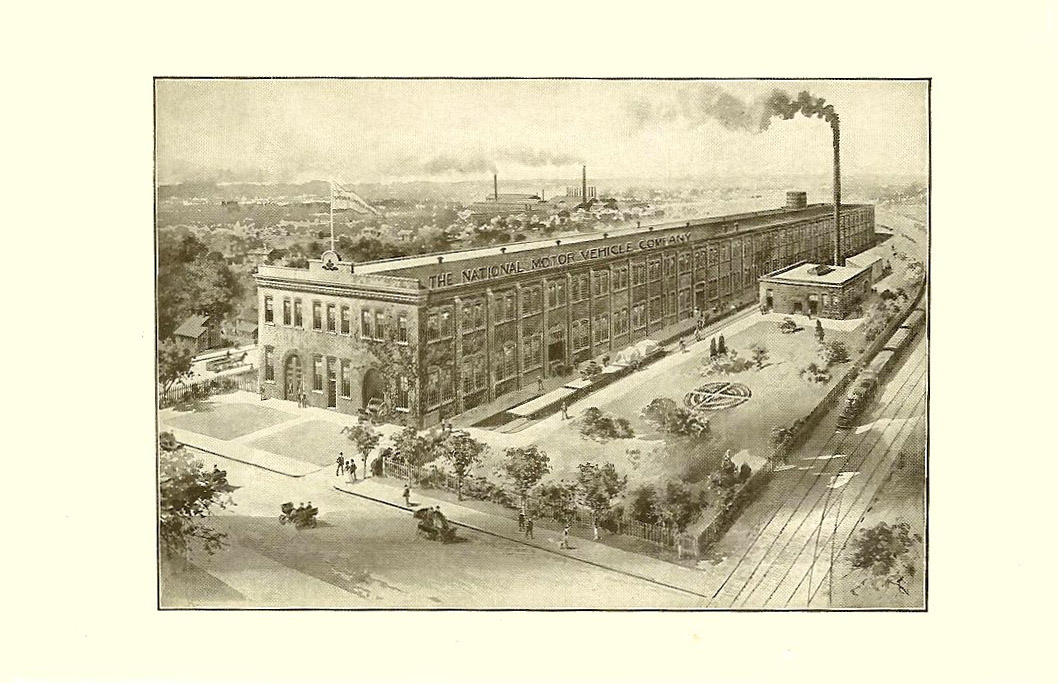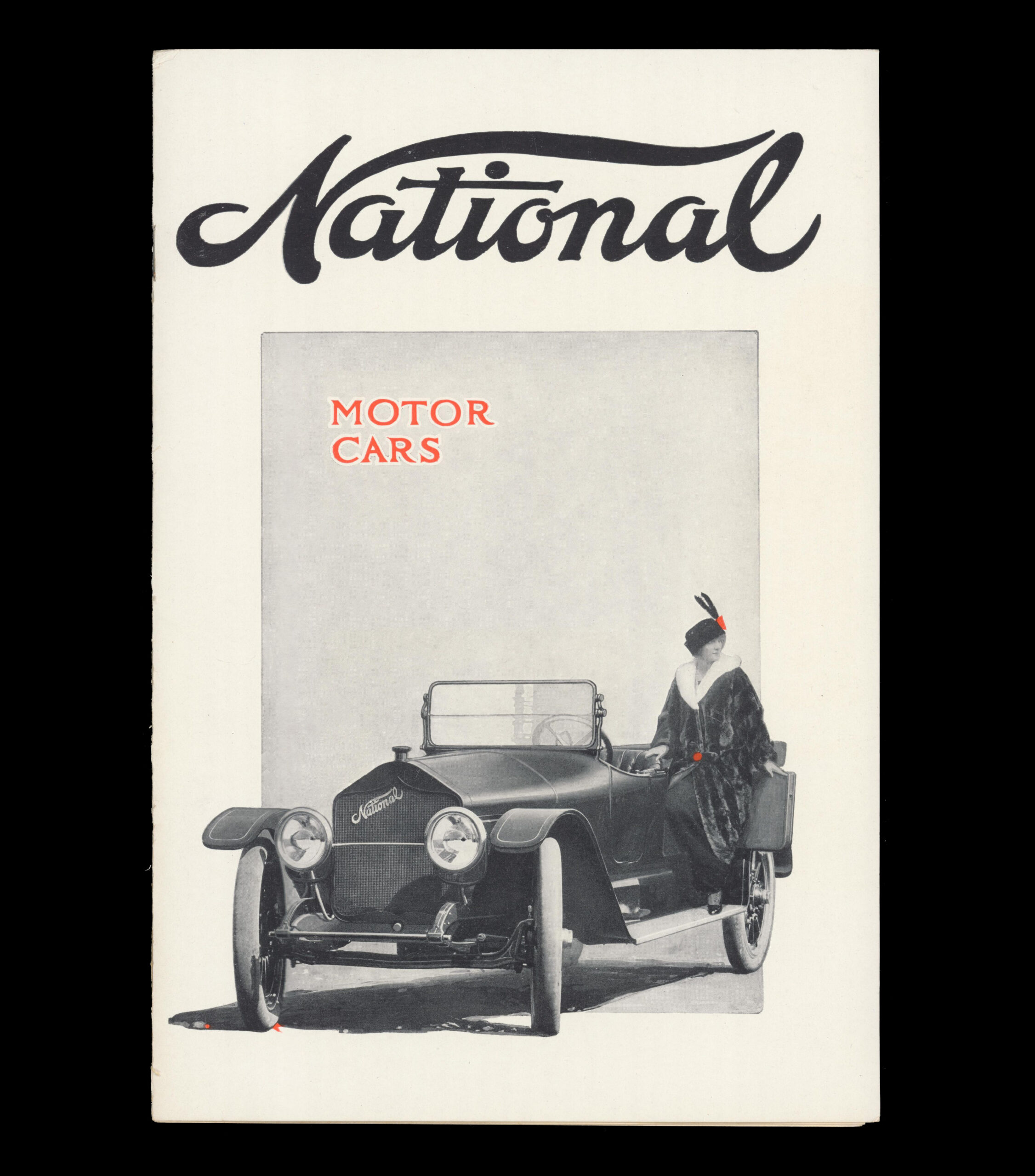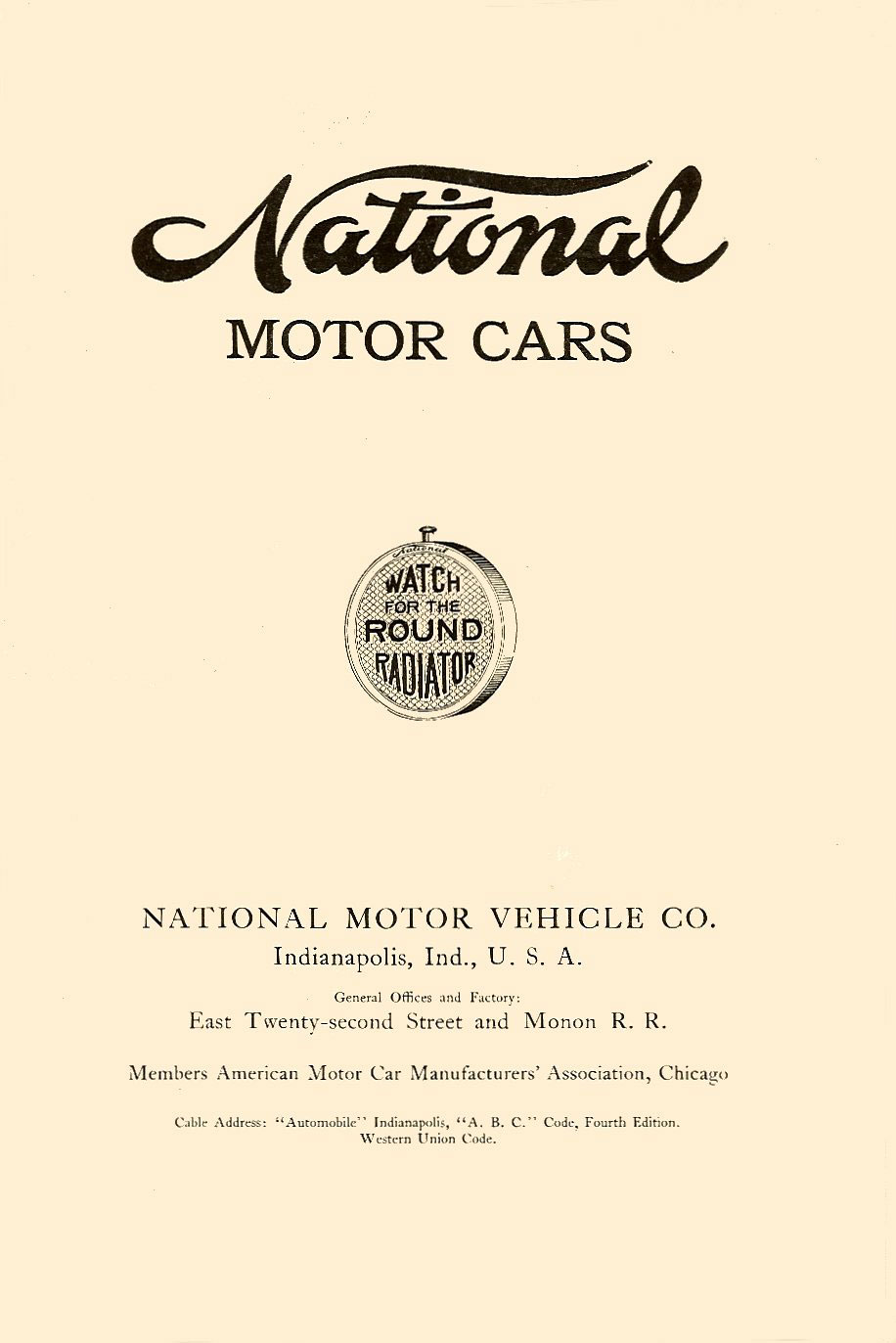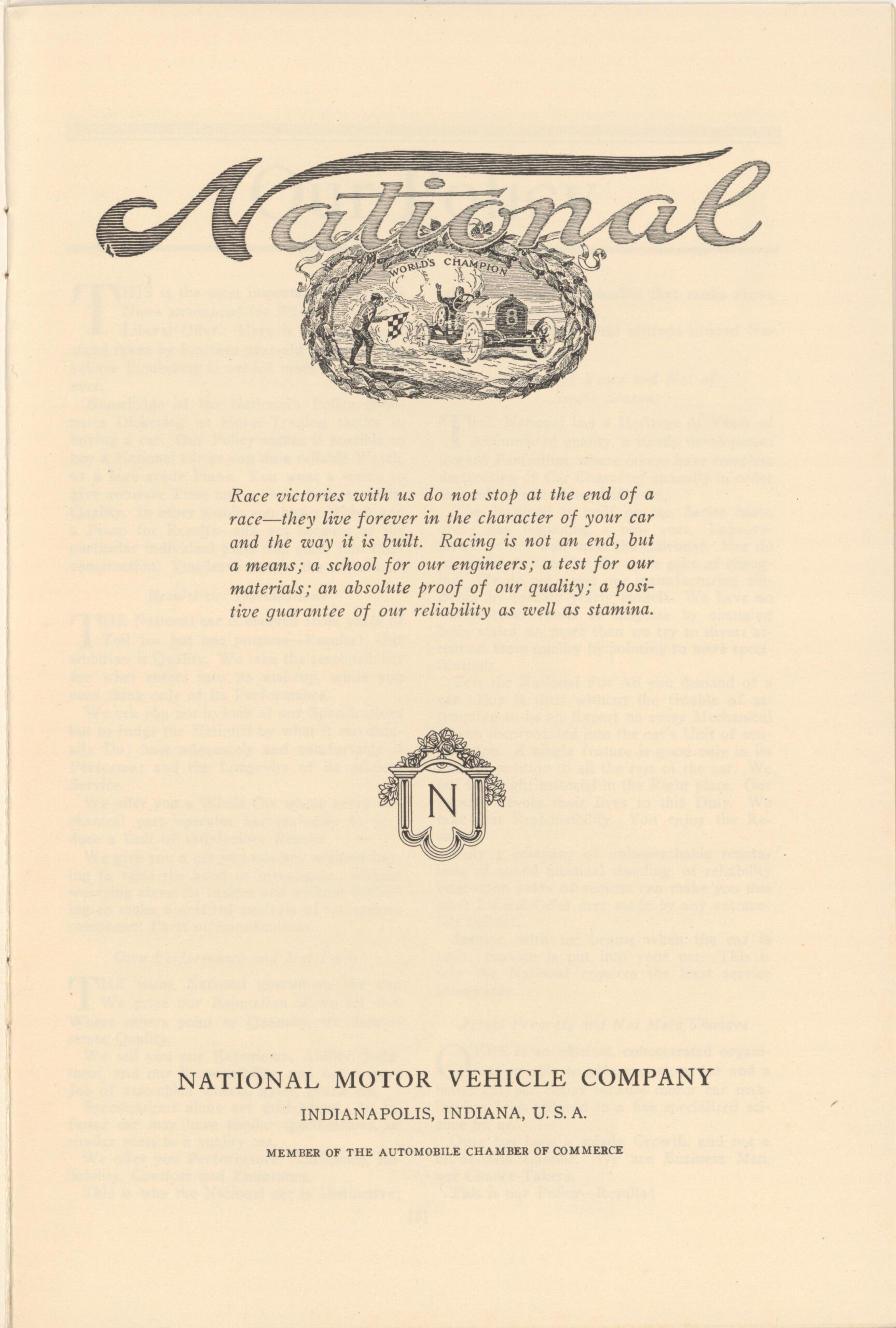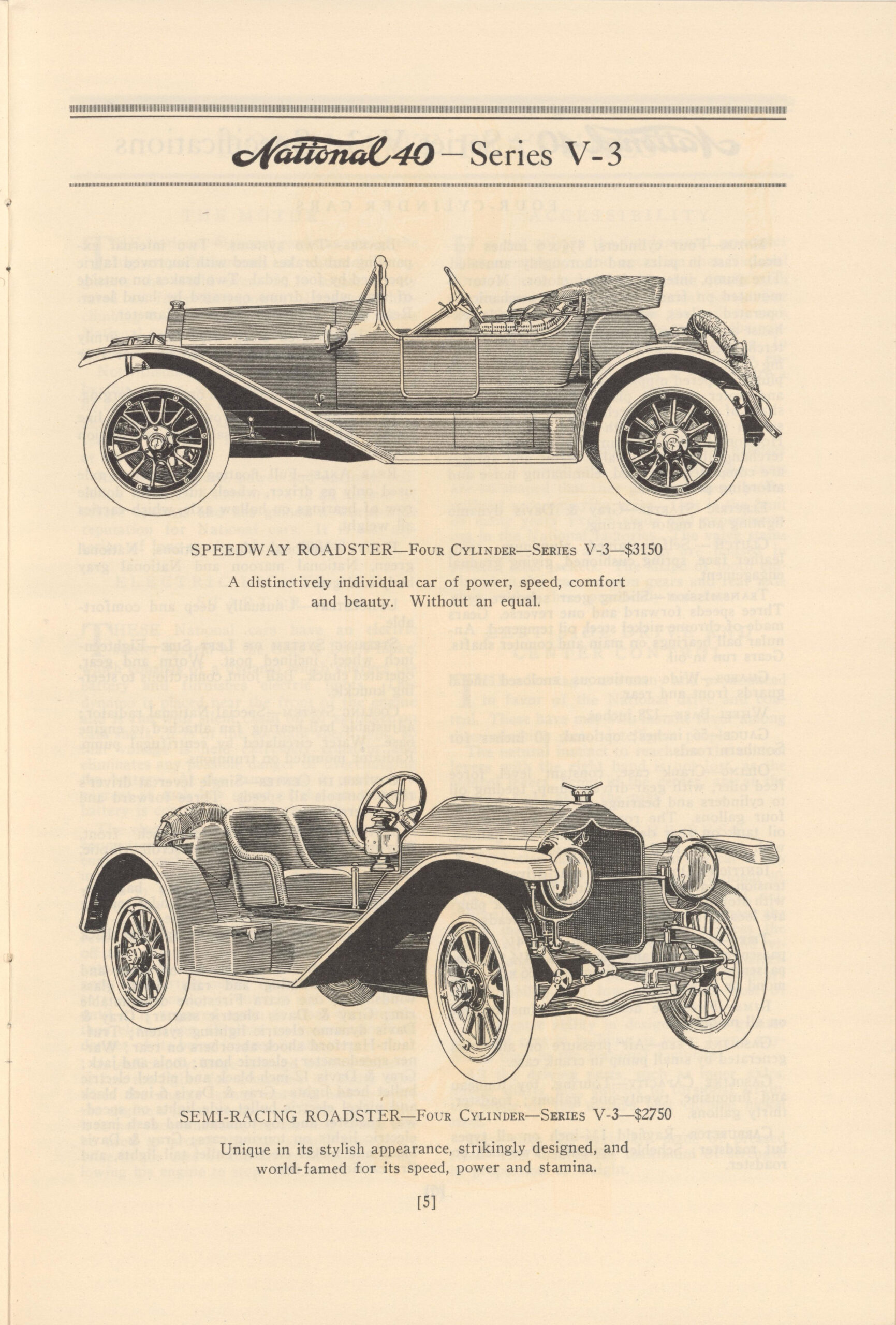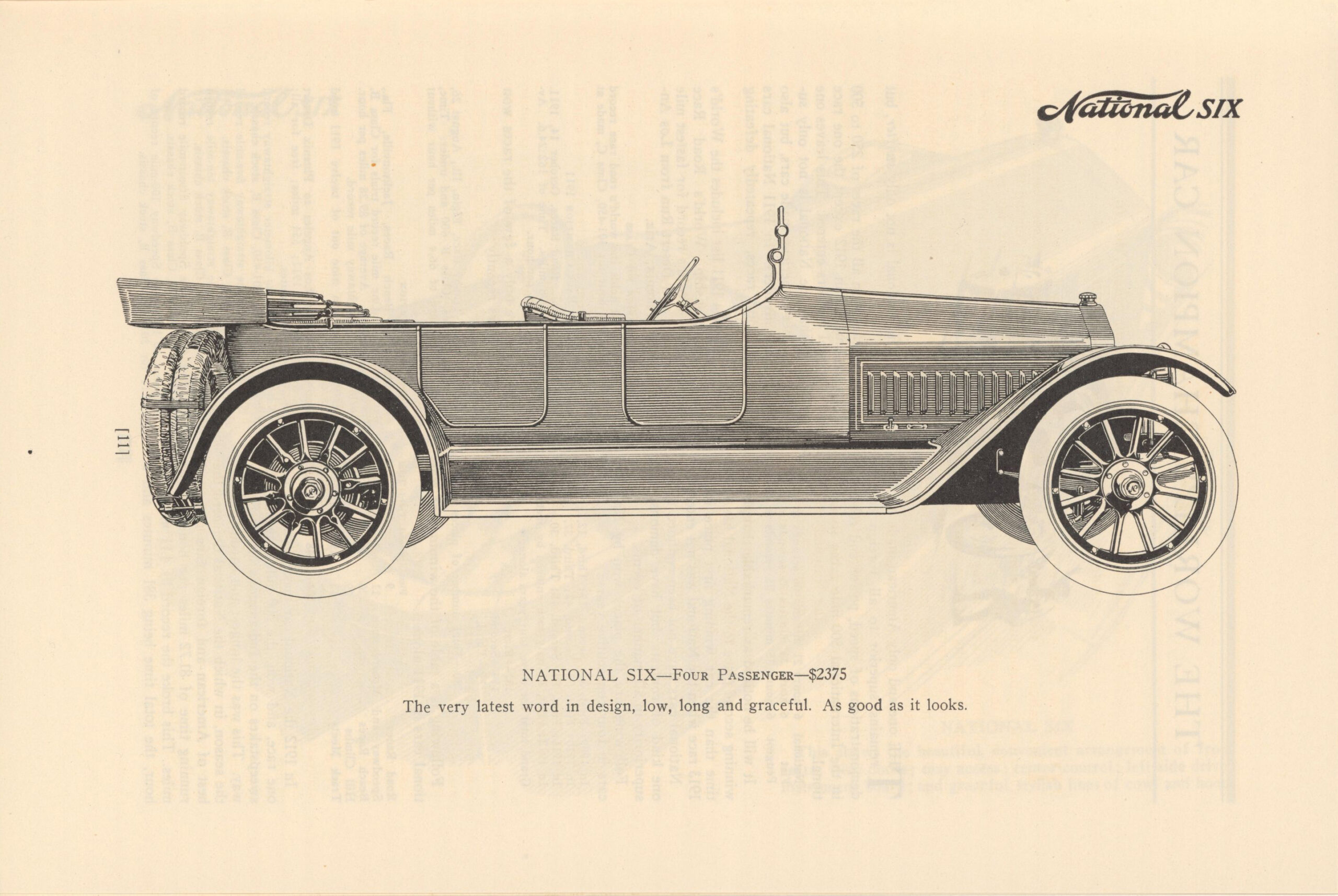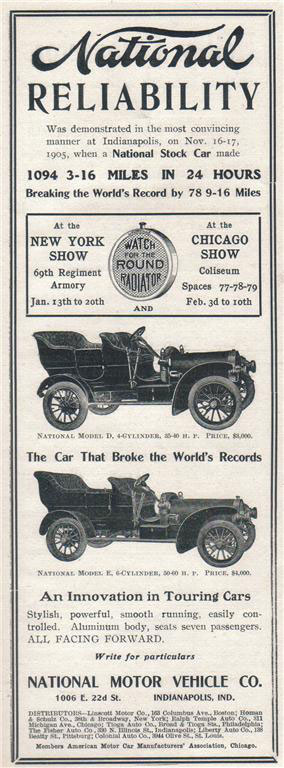The company first concentrated on electric vehicles, making their first one, a runabout with tiller steering called the Style A, in 1900. They moved into internal combustion engined cars in 1903 with a two and four cylinder model both using engines made for them by Rutenber.

The 1904 National Tonneau was a tonneau model. It sold for US$2000. The single electric motor was situated at the rear of the car, producing 9 hp (6.7 kW). A 4-speed herring bone transmission was fitted. The armored wood-framed car could reach 15 mph (24 km/h).
For 1905, the two cylinder model was dropped and a six cylinder car with a circular radiator took its place. The last electric cars were made in 1906, and in 1907, National starting building its own engines.
Peak production for National was reached in 1915 with over 1800 cars made. The company changed its name in 1916 to the National Motor and Vehicle company, and in 1922, became part of the Associated Motor Industries group. However, sales dropped in the early 1920s and the company closed in 1924.
(text source: Wikipedia)
